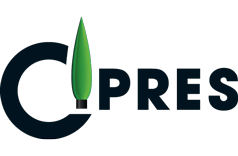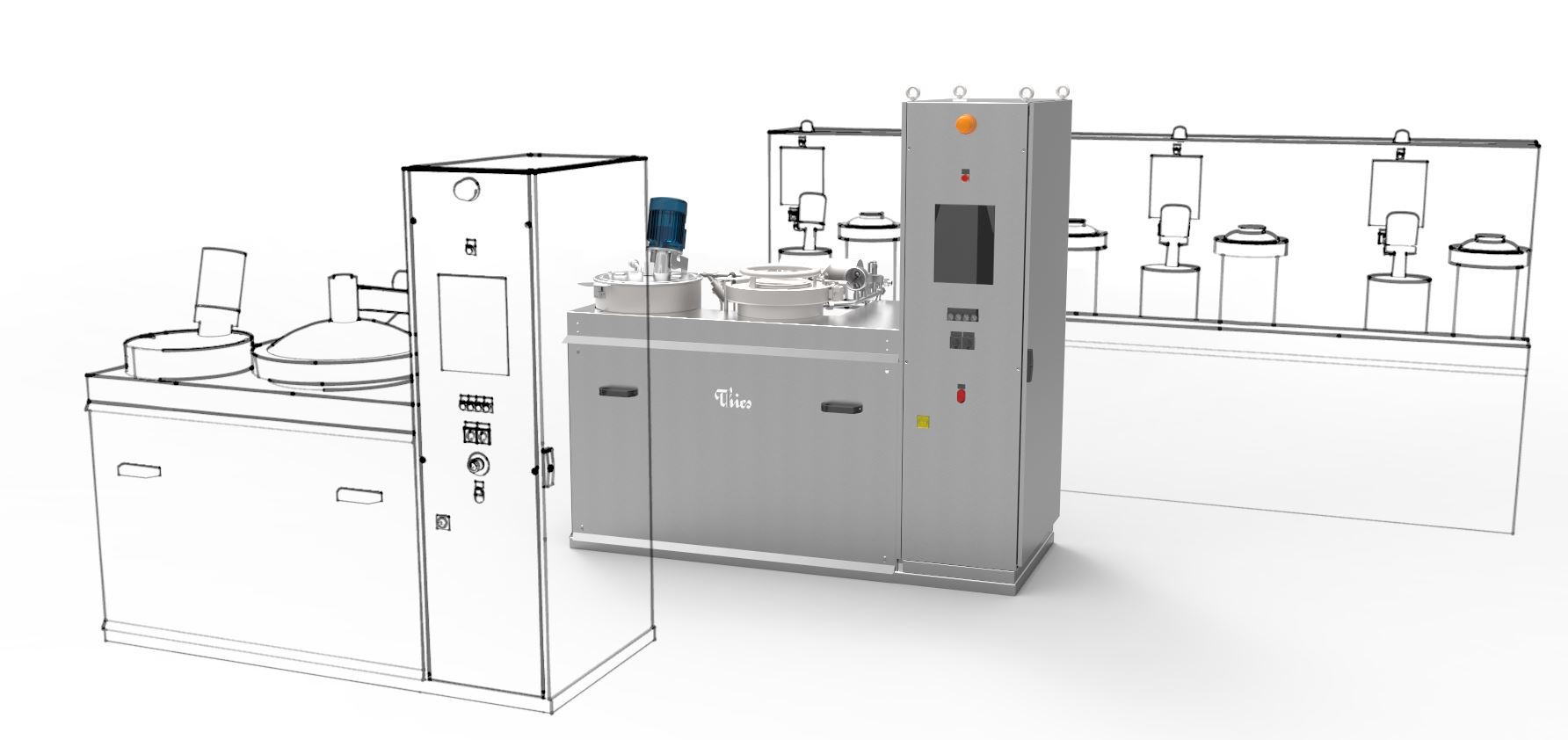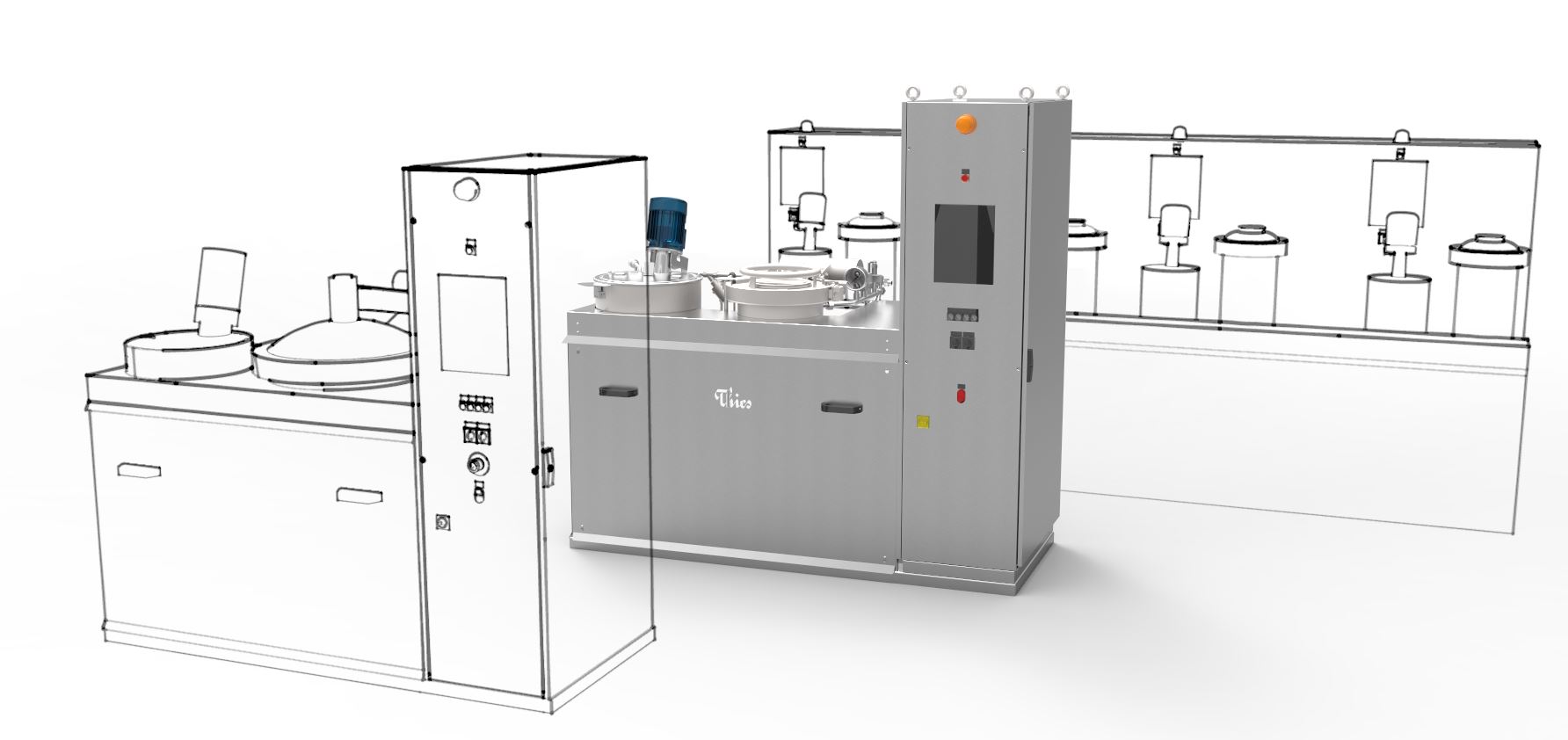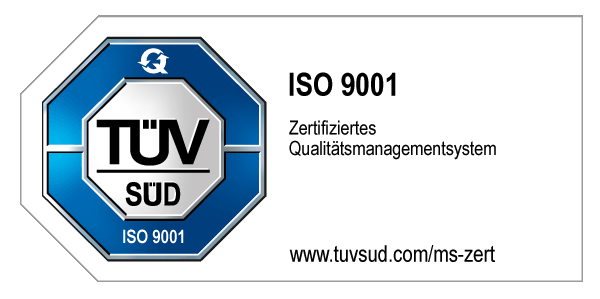To address prospective customers who want to realize an in-house dyeing process for their blanks too, CIPRES and the long-established Thies GmbH & Co. KG have collaborated to develop a product program that sets new standards in the market: the dyeing machines in the eCOLOR series. Currently
on offer are three different versions, each with a different size and type of dyeing vat to accommodate various capacity and lot size needs:
• eCOLOR Type 1/350/1 with vat diameter of 350 mm
• eCOLOR Type 1/550/1 with vat diameter of 550 mm
• eCOLOR Type Quattro with up to 4 dyeing vats in series that can perform up to 4 (different, if required) treatments at the same time
All three models feature fully automated operation as well as unrivaled efficiency and sustainability.
The system is open: All dyes (hazard class group 2), suitable for a given material can be used. The user is thus not bound to any particular dyes and dye suppliers. There are also no limitations on the material. Everything is possible: from PA12, PA11, and PA6 through Iglidur, TPU, PTE, and ABS to PC, nylon, PPSF, and resin – even polypropylene (PP) can be dyed using this technology. Reinforced materials can also be processed without any problems. The process used for manufacturing the part, whether SLS, MJF, FDM, or SLA, plays no role. Whether it was treated by superfinishing or chemical smoothing also makes no difference.
The innovative technology is the result of more than 129 years of experience with industrial dyeing machines in the textile sector that the company Thies contributes. The eCOLOR series is the result of a longstanding cooperation with CIPRES.
The prerequisite for a high-quality, cost-efficient, and sustainable dyeing result is use of the correct amount of dye. This calculation must be made once for each dye formulation and can then be projected onto other dyeing processes for blanks in consideration of the calculated surface area. That can be done independently of the number of parts to be dyed. A standard formulation set with five colors is included in the package – CIPRES can develop additional dye formulations optimized for a given material on request at any time. Up to 999 dye formulations with the corresponding parameters can be saved in the system for comfortable operation and trouble-free use.
Unlike “rough estimate” dye formulations, the result of this technology in blister packs and in direct comparison with other dyeing machines on the market offers four key advantages.
ADVANTAGES OF eCOLOR TECHNOLOGY
Outstanding dyeing results because there is no excess of dyes
+ The pores cannot be clogged during the dyeing operation – the parts are dyed evenly and then rinsed off effectively.
+ “Bleeding” during later use or deployment of the dyed product is thus prevented. Particularly in the medical sector, in the styling area, and for visible parts in vehicle cockpits, this is a fundamental requirement.
Superior reproducibilities due to precise formulations
+ Thanks to state-of-the-art control technology, the dyeing line is fully automated. The dye formulation, defined once and tailored to the respective material, guarantees a stable dyeing result that can be reproduced any number of times – irrespective of the number of parts.
High efficiency with sustainable use of materials and resources
+ Through the correct one-time calculation of dye amounts, no unnecessary costs arise for surplus dye. At the same time, elaborate and superfluous rinsing processes are avoided.
+ The user can freely select the dyes and the corresponding dye suppliers.
+ Based on the lot size, the user can flexibly select the scalable formulation and the size of the loading basket.
+ The eCOLOR dyeing machine is currently available in two different vat sizes as well as one variant with up to four dyeing vats in series. Other sizes can be provided on request.
Good environmental compatibility
+ If dyes of hazard class group 2 (harmless materials) and complete exhaustion dyeing (i.e., not saturation dyeing) as well as appropriate rinsing operations are used, the wastewater from the dyeing process can be discharged via the sewer system in accordance with regional requirements.




